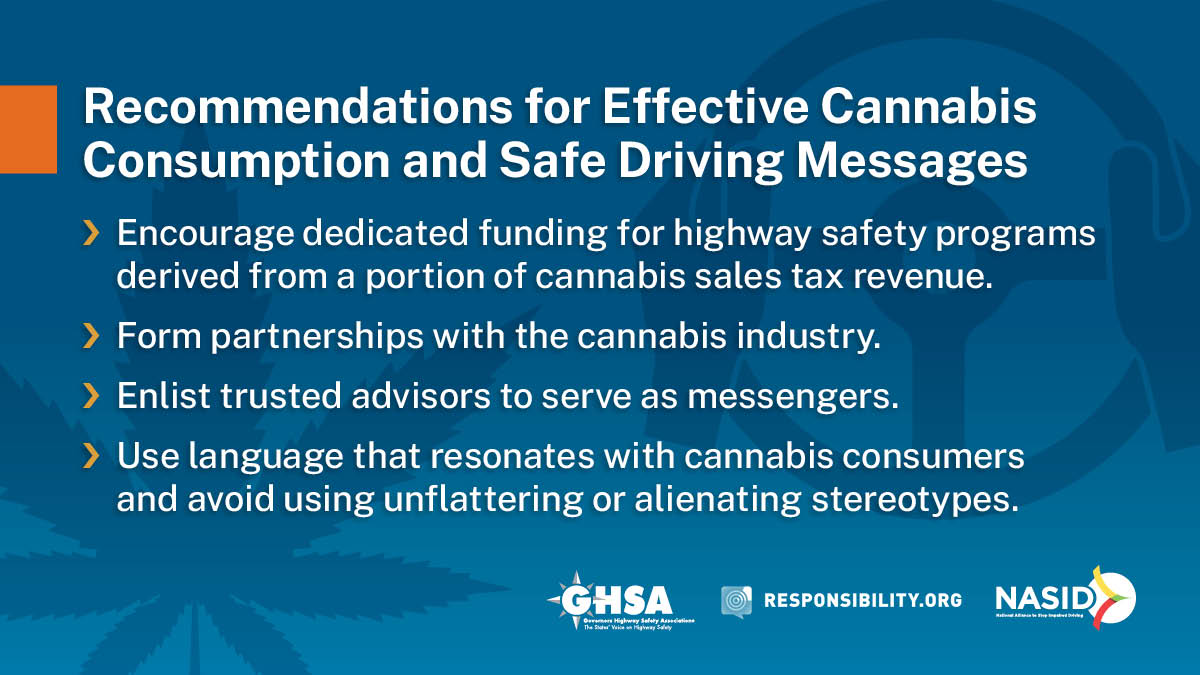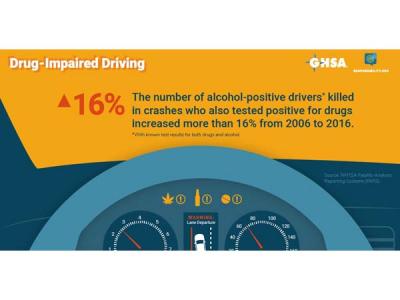Drug-impaired driving is a growing problem in the U.S., and the laws are complex and vary by state. There are over 400 drugs that are tracked by the National Highway Traffic Safety Administration (NHTSA) that can cause impairment, and each has a different impact on every user. As states address the issue of drugged driving, the need for additional data is important.
More than half (56%) of drivers involved in serious injury or fatality crashes tested positive for at least one drug in the fourth quarter of 2020 (Update to Special Reports on Traffic Safety During the COVID-19 Public Health Emergency: Fourth Quarter Data, NHTSA).
Cannabis Consumers and Safe Driving
The landscape around cannabis is rapidly changing, including the legality, the prevalence and the social norms about its use. Even as more people become familiar with cannabis and as calls for national legalization grow, there remains a significant disconnect between people’s views on its use and safe driving, emphasizing the need for effective public outreach and education.
A 2023 AAA Foundation for Traffic Safety survey found that 94% of people say driving while over the legal blood alcohol concentration (BAC) limit is very or extremely dangerous, but only 70% believe it is dangerous to drive within an hour of consuming cannabis. Some people even think that cannabis use improves their driving. But research confirms that cannabis directly affects the parts of the brain responsible for attention, decision-making, coordination, and reaction time, which are all critical for safe driving.
Cannabis Consumers and Safe Driving: Responsible Use Messaging – a report from GHSA, Responsibility.org and the National Alliance to Stop Impaired Driving (NASID) – provides guidance on how State Highway Safety Offices (SHSOs) can better communicate with cannabis consumers about safe driving and offers recommendations about the types of messages that do and don’t work.
The report highlights lessons learned from outreach efforts in Colorado and Washington, the first states to legalize cannabis, as well as more recent efforts in Connecticut and Wyoming. It also discusses promising practices that all SHSOs should consider utilizing to create the most effective messages and offers recommendations.

GHSA PolicyClick here to view GHSA's Policy and Priorities on Impaired Driving |
Impaired Driving Prevention Grant Program
GHSA and Responsibility.org sponsor a grant program to help states train law enforcement officers to recognize drug-impaired drivers. In addition, Responsibility.org has created a DUID Checklist for Policymakers, which can be accessed on its website.
Together, GHSA and Responsibility.org enable states to provide law enforcement officers with the advanced training and skills necessary to detect drivers who are impaired by marijuana and other drugs. As drug-impaired drivers continue to be a nationwide problem, this partnership aims to ensure that law enforcement agencies and highway safety offices have all the tools available to them to identify these drivers. Learn more about the partnership here.
GHSA and Responsiblity.org also work together through NASID to eliminate all forms of impaired driving, especially multiple substance impaired driving, through effective and proven measures such as DUI system reform, DUI detection and improved use of data and technology. GHSA Chief Executive Officer Jonathan Adkins is the NASID Board Chair. NASID has created an interactive, online state laws map and database that is updated in real-time and designed to empower users to navigate the cannabis- and DUI-law labyrinth across the U.S. at no cost. You can access the map here.
News tagged with Drug Impaired Driving
Featured Initiative
Impaired Driving Grant Results: Connecticut
Through a grant funded by GHSA and Responsibility.org, the Connecticut Department of Transportation Highway Safety Office (CDOT HSO) delivered the state’s first green lab, providing law enforcement officers with training and advanced information on how to identify impairment by cannabis. Additionally, CDOT HSO developed an operation plan which is now the blueprint for future green labs.
Read More



